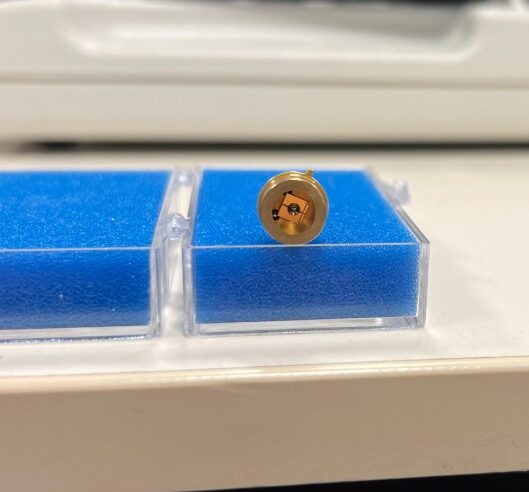By Betsy Vereckey, contributor
Solar energy is always hot, but there’s one obvious drawback: You need the sun for it to work well.
But what if you could capture the benefits of solar energy even after the sun has set? A new experiment has demonstrated that infrared heat released from the Earth at night can be used to generate electricity.
“A solar panel doesn’t convert all sunlight into electricity—a lot of the losses just end up generating heat,” says Ned Ekins-Daukes, an associate professor at the School of Photovoltaic & Renewable Energy Engineering at the University of New South Wales and a co-author of new research that delves into the subject.

The impetus for Ekins-Daukes’ research began seven years ago when he and a team of researchers had an idea to transform these energy losses from solar panels into something useful. “Let’s collect that heat, and let’s do something with it,” Ekins-Daukes says.
Ekins-Daukes has spent most of his career working in solar energy, which represents around 3% of U.S. electricity, government statistics show. Solar energy is also much cheaper now than it was in the late 1990s, when he started in the sector, with some estimates calling it the cheapest energy source available.
When the sun graces the Earth with its radiant heat, this solar energy is dissipated at the end of the day as infrared light back out into space. “Climate scientists study this in great detail because this underpins a very tiny imbalance in incoming and outgoing radiation, which gives rise to global warming,” Ekins-Daukes says, noting that this exchange of energy can easily be converted into something else. This prompted Ekins-Daukes to wonder if other researchers had ever thought similarly; upon investigation, he found that they’d only explored the idea theoretically. Ekins-Daukes wanted to go a step further.
“A couple of members of the team and I filled up a whiteboard with math and diagrams, and we sort of scratched our heads and thought, okay, you know, this might be possible,” he says.
A device that generates electrical power in the dark
To prove whether this was possible, the team created a semiconductor device called a “thermoradiative diode.” This device takes the Earth’s thermal flow of energy and turns it into electricity by relying on the temperature difference between our planet’s hot atmosphere and the chilly void of outer space. The device is composed of the same materials that the military uses in night-vision goggles to detect infrared activity, where “you need to be able to see the thermal emission that’s coming off whatever you’re looking for,” he says. If you wanted to see animals at night, for example, “night vision will show you the slight temperature difference between body heat and the surroundings.”
“As a graduate student, I was trying to figure out how to improve solar cells with this trick or that trick, but many years later, it turned out to be really useful for helping us navigate toward our thermoradiative diode,” he says.

One challenge the team ran into was that it was very hard to measure the voltage—the amount of electricity generated—because of imperfections in the semiconductor that lowered the amount of voltage emitted. “The voltage we’re measuring are microvolts,” which are much smaller than the voltage of a standard solar cell, around 100,000 times less, he says.
“When we realized that our material would have imperfections and that the effect of those imperfections was to dramatically reduce the voltage, we realized that we needed to improve the experiment,” he says, noting that “as soon as you have imperfections in the semiconductor, the voltage is going to become really small, so small that if you take a standard vault meter, you’re not going to be able to measure it, so we needed to improve the way that we measured voltage. When we did that, suddenly all the data flowed.”
A two-pronged approach: solar in the day and infrared at night
Currently, the amount of voltage generated from the device is much too small to power a solar panel. Ekins-Dauke says that a solar panel on your roof typically generates about 200 watts per square meter on a bright sunny day, whereas their thermoradiative diode would generate about 20 watts per square meter. However, Ekins-Dauke says it’s important that the device can generate power at all; demonstrating that energy can be made in this way is what really matters.
“If we can improve the semiconductor a bit—and that’s not going to be easy—but if we can improve the semiconductor a bit, then the voltage will go up,” he says. “We can start by using a friendlier semiconductor, and then using that to power consumer devices, like a wristwatch, which could be powered by your own thermal body heat radiating into a colder room.” By “friendlier,” Ekins-Dauke suggests using a type of semiconductor that is already being used in consumer electronics.

“If you’ve got an iPhone, the Face ID works by having a little laser that gently illuminates your face with little spots of infrared light, and that’s how it knows that it’s you and not somebody else who’s trying to get into your phone,” he said. “This is kind of what we’re thinking of as the next device design.”
Ekins-Dauke acknowledges that the thermoradiative diode is at a very early stage and will need significant work before it can generate sufficient electricity from people’s rooftops. That said, he notes that it’s possible in principle to combine the thermoradiative diode with photovoltaic (PV) technology, which converts light into electricity.
“PV could be used on your roof during the day, and at night it could generate electrical power again as we radiate infrared light into the cold night sky,” he said. “To do that over large areas, there’s quite a bit more work to do, but I think that’s one of the things that makes this feel really interesting.”
Lead photo by Andre Benz/Unsplash

